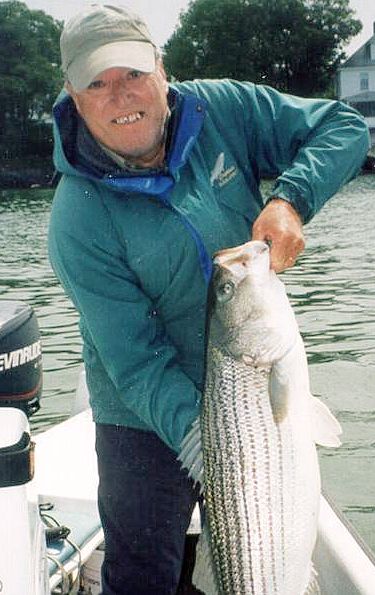It’s
time to gear up and plan for Maine
Rods, reels, lines, flies,
hooks, terminal tackle, clothing, boats and other personal items need to be
attended to now, not a few days prior to your first trip to the salt. All those
items need to be inspected, repaired, cleaned or replaced to be ready for battles
come spring.
All the pictured fly reels and
bags full of fly reels and new fly lines need to be cleaned and have new lines
strung. Not torture, but it has to get done prior to the season as there is
precious little time available then. Anything you can do to simplify the
process is most welcome.
Several years ago, Jim Young who
manages Eastman’s Tackle in Falmouth , MA
So, I went shopping to find a
jewelry cleaning machine and found one easily at a jewelry counter in a local
store. Now this machine isn’t the commercial item Jim uses, but it does work on
smaller parts of reels as you clean one. Some of the larger parts can be
cleaned by holding them in the tub one little section at a time. This is not a
fast as Jim’s machine, but it does an admirable job. The chemicals required are
readily available at most larger retail outlets. This is much better than I can
do by hand.
One item I see sports neglect
every year is their leader, be it a butt leader or full tapered leader. Every
season I have numerous sports show up with their own equipment and I always ask
the pound test of their tippet. The usual answer is, “I don’t have clue, it’s
the same one I used last year”. I don’t even bother to inspect leaders. All are
replaced with appropriate tippets for the intended game. One note on leaders. I
always use a knotless, tapered leader for all popper fishing. This will
eliminate knots which always catch little and big pieces of debris floating on
the surface all season long. It is very annoying to have your leader fouled
with debris just when a fish starts to following a fly. The debris is just
enough to turn the hot fish away from striking. Another note, if you use tea
colored leaders for Atlantic salmon fishing, take it off as I found them not as
effective as fluorocarbon leaders in the salt. I think the tea colored leaders
show up too much in salt water, potentially spooking fish.
It’s a pain to strip all your
fly line off the reel to inspect the knot between backing and fly line. I have
seen dozens of fly lines lost to aggressive fish. Not only do you lose a fish,
you lose a $40 to $90 fly line which is connected to a fish. That fish might
not drop the line and die from being snagged to kelp or other underwater items.
Just retie the connection to eliminate a potential weak spot in your setup.
Fly rods need a little attention.
If you didn’t do it in the fall, take a fly rod a day to the shower with you to
clean them carefully using an old tooth brush. Make certain to clean each guide
inside out and backwards as this is an area that gets neglected too often. When
the rod is dripped dried for a day, inspect every inch for issues. Run a small
piece of nylon stocking back and forth through each guide on all 360 degree
inside surfaces. If there is a problematic nick in the guide, the stocking will
catch up on it. Either carefully file the nick down with fine emery cloth or
replace the guide.

